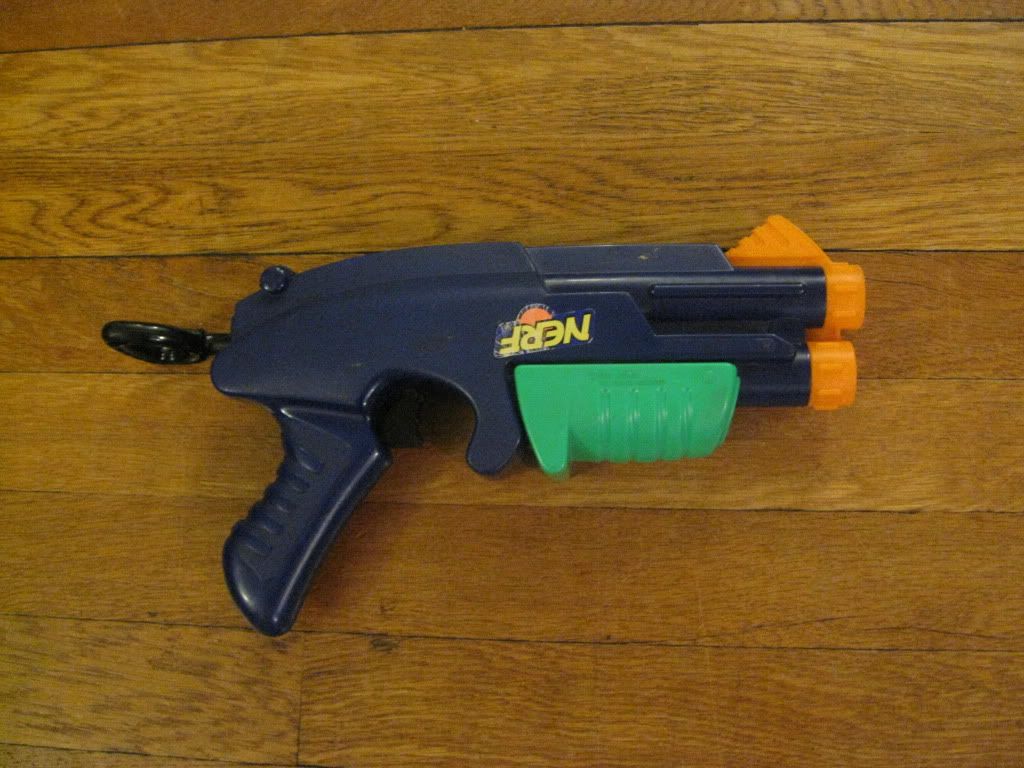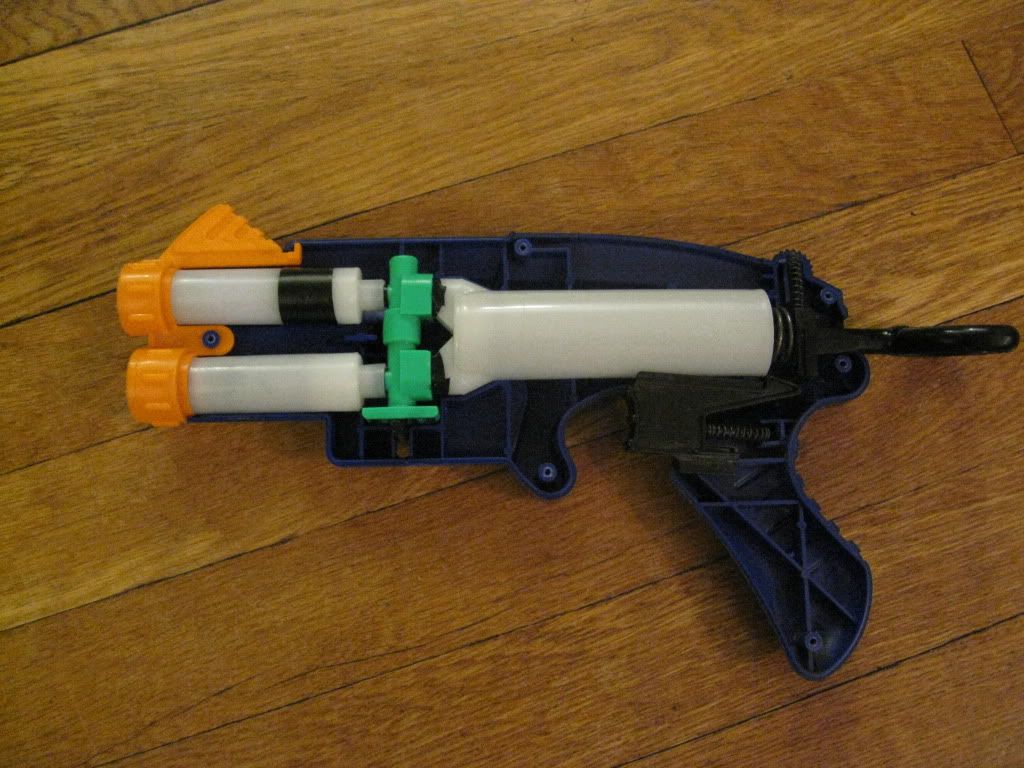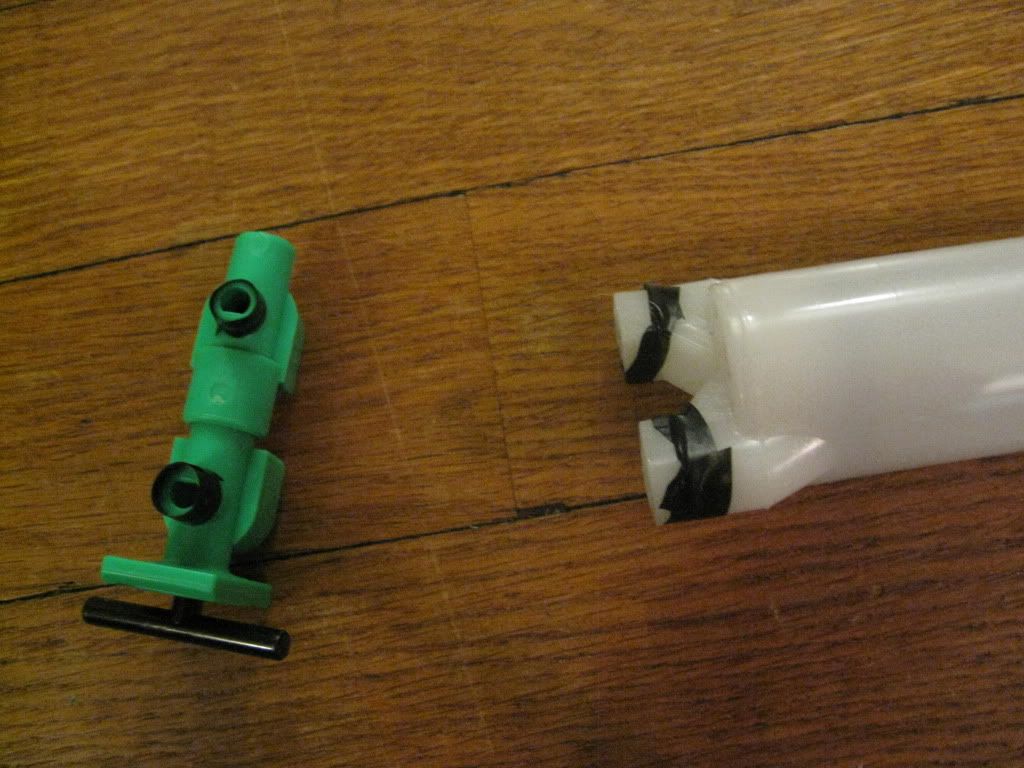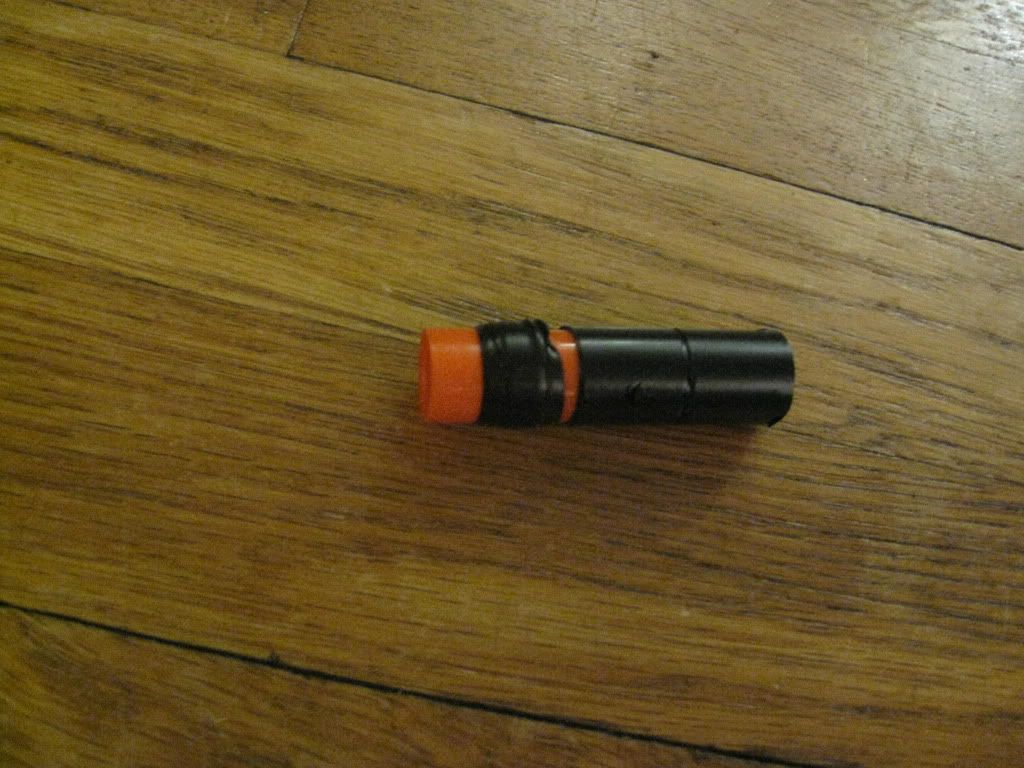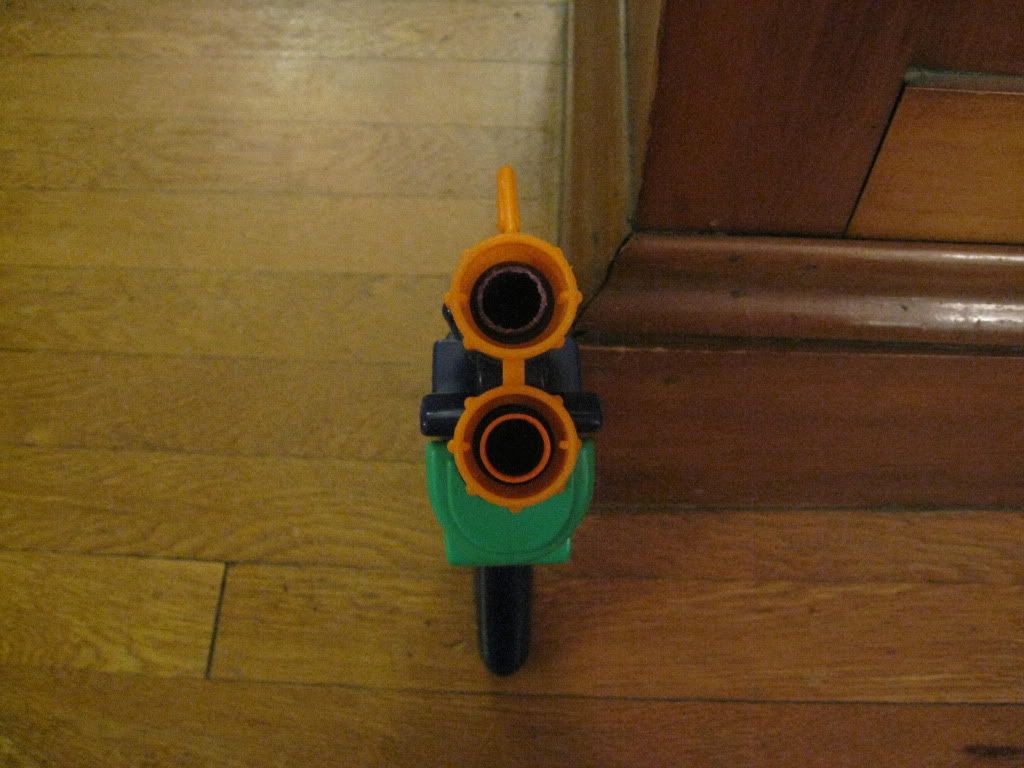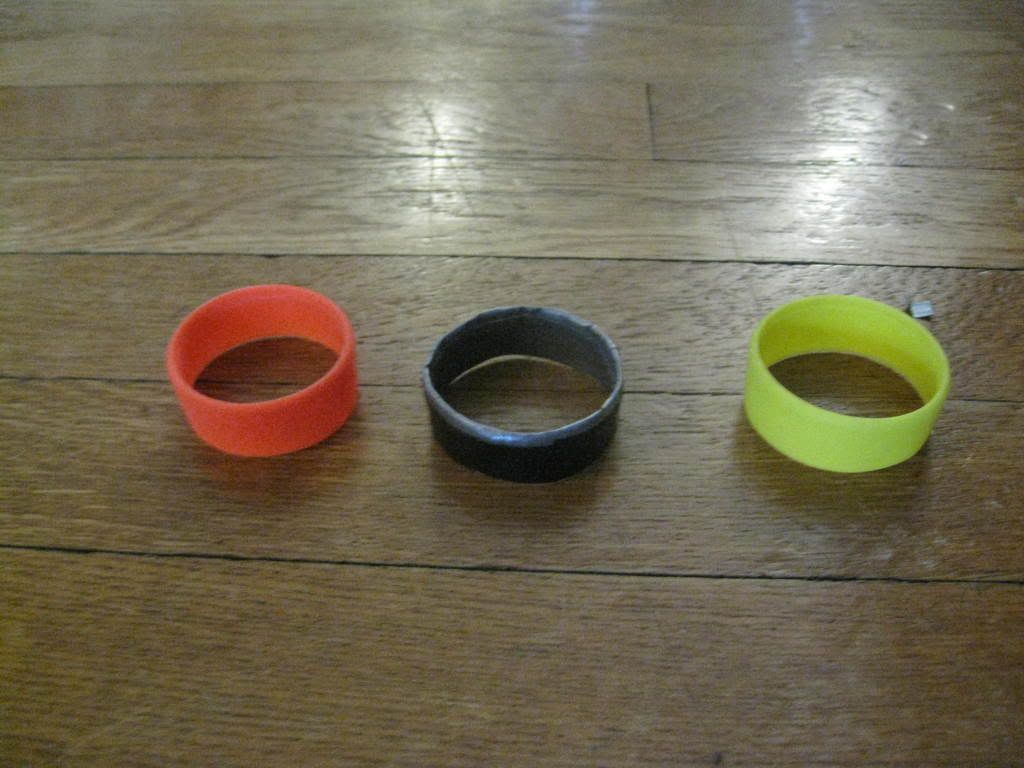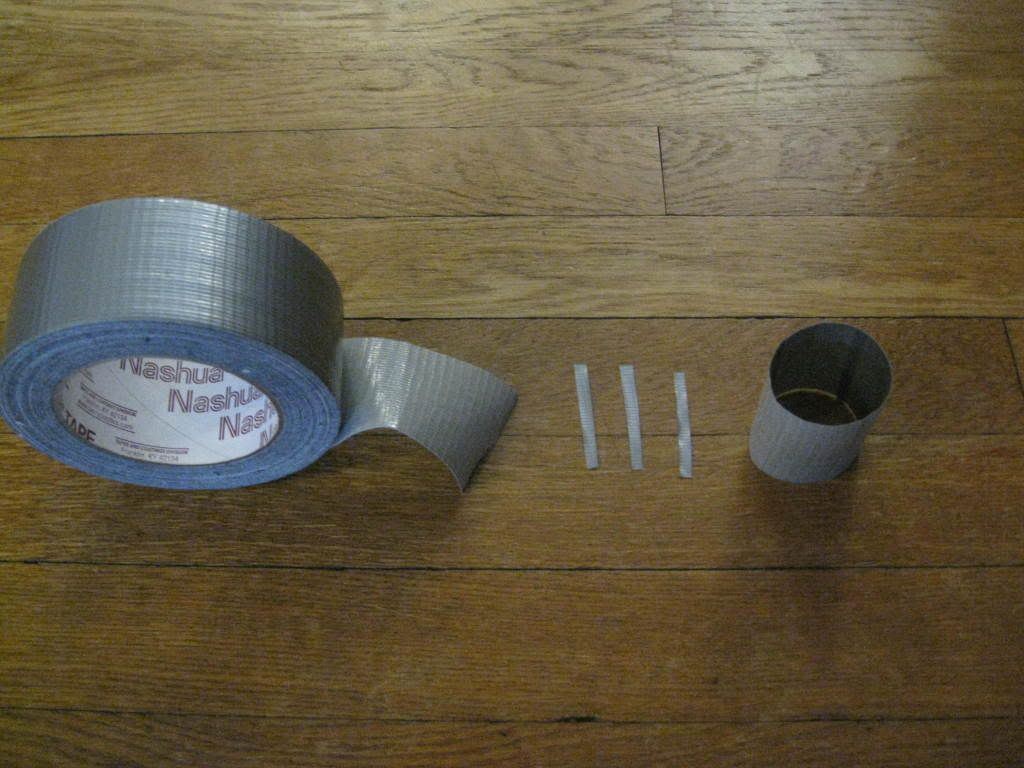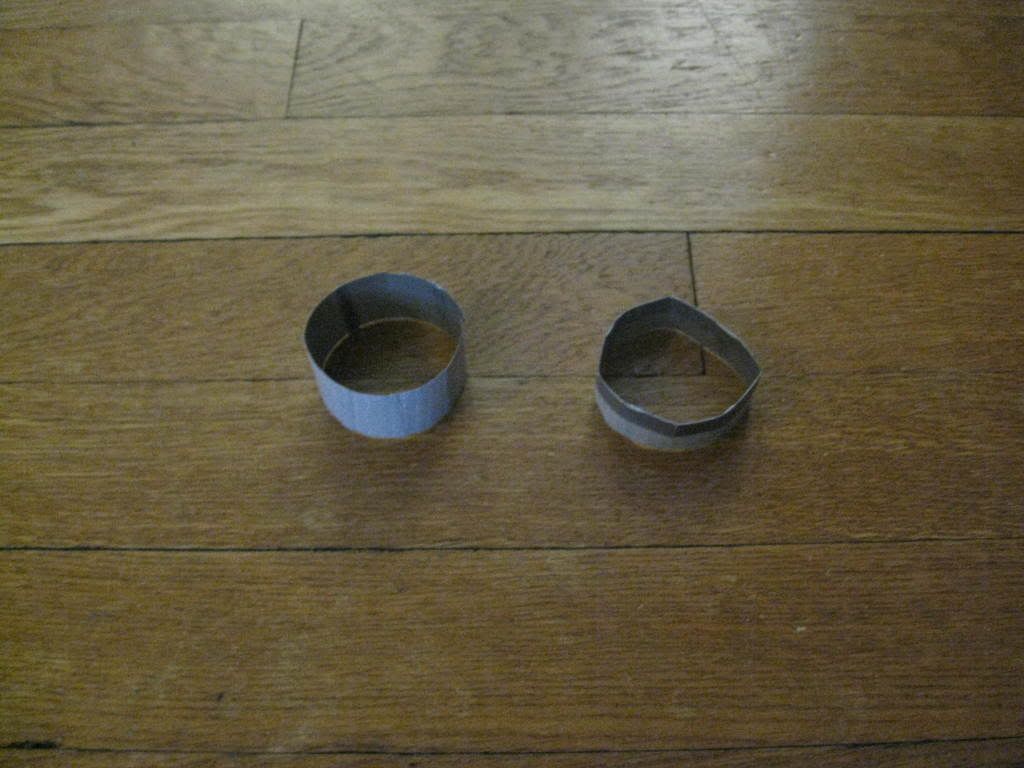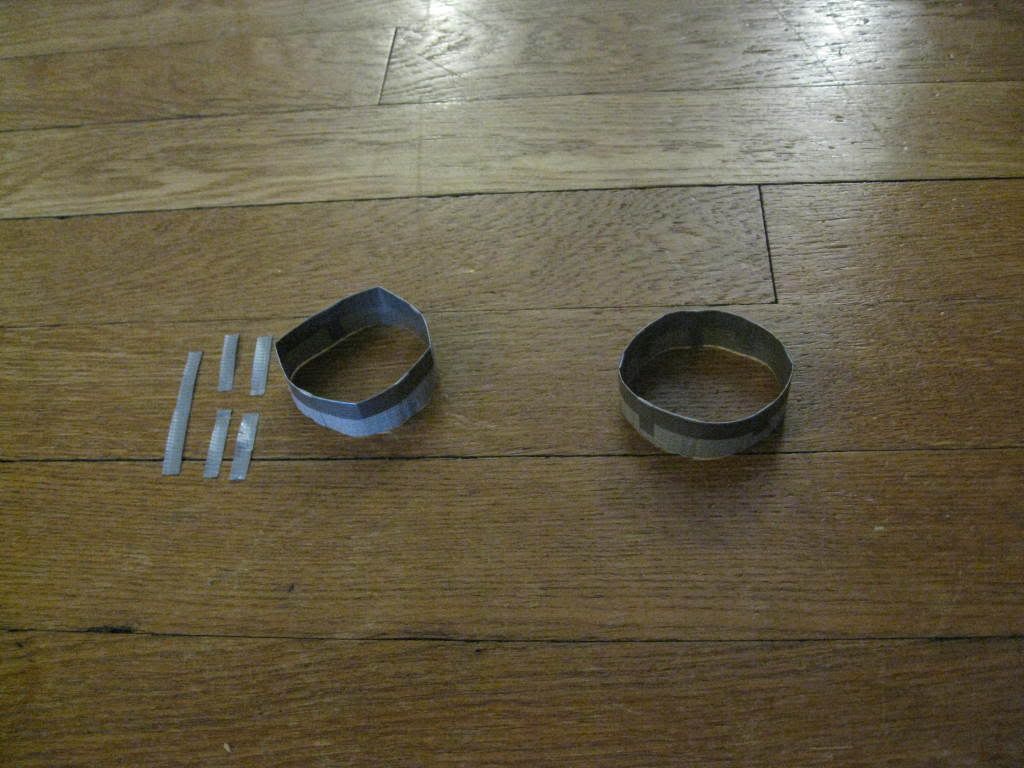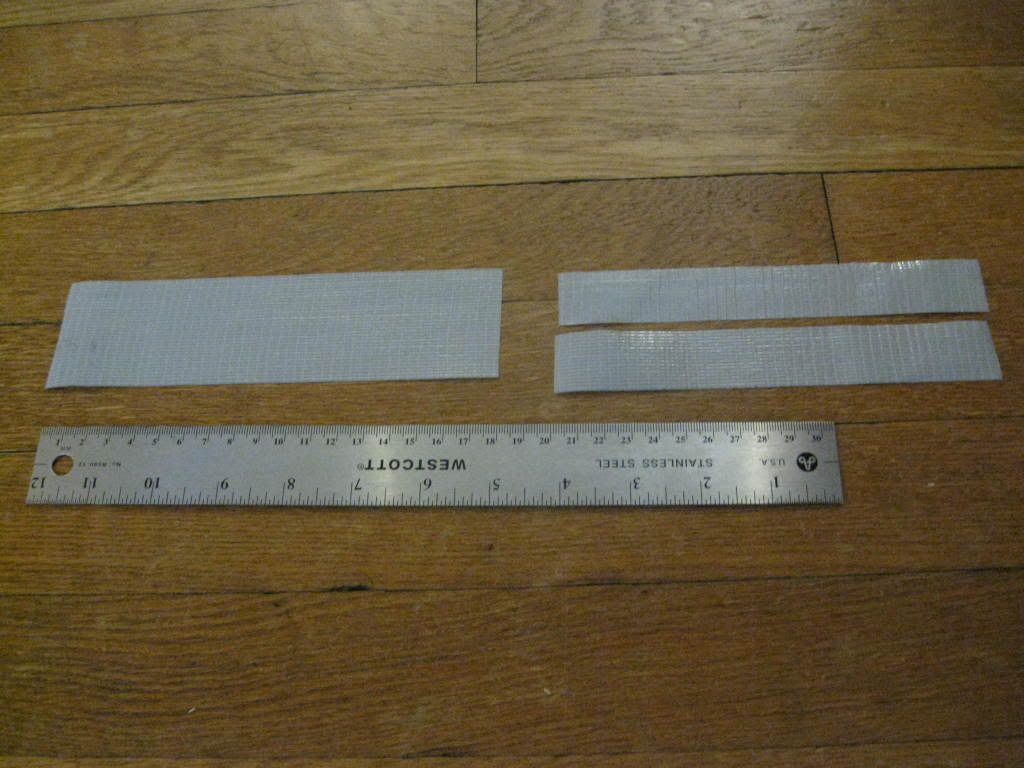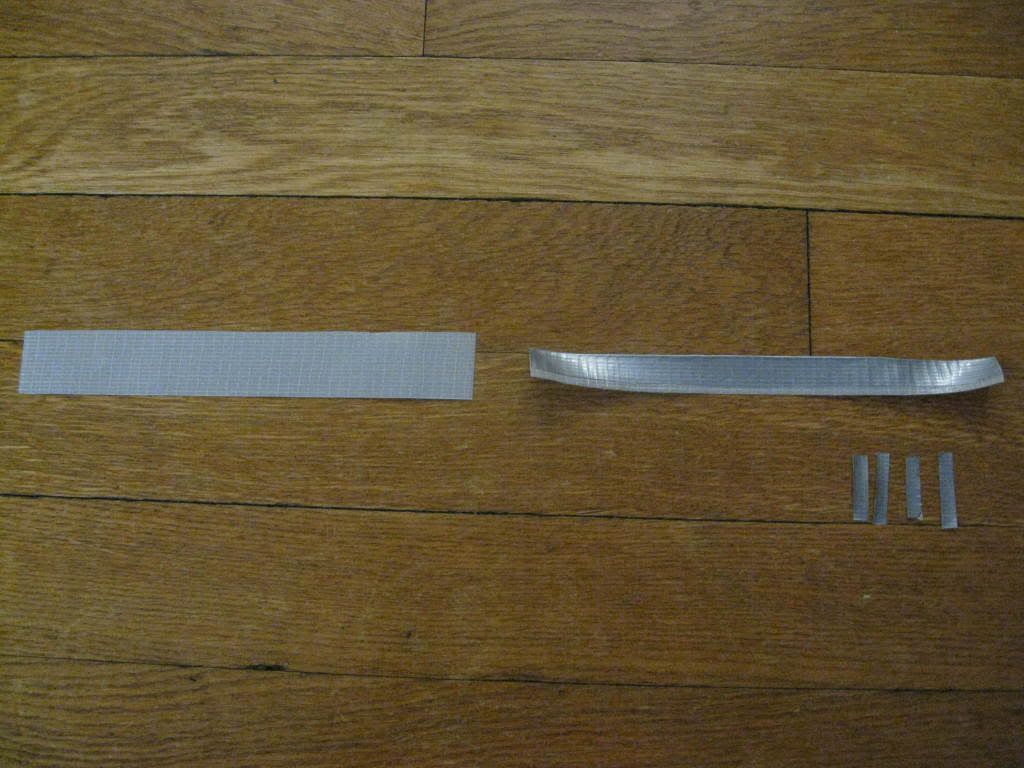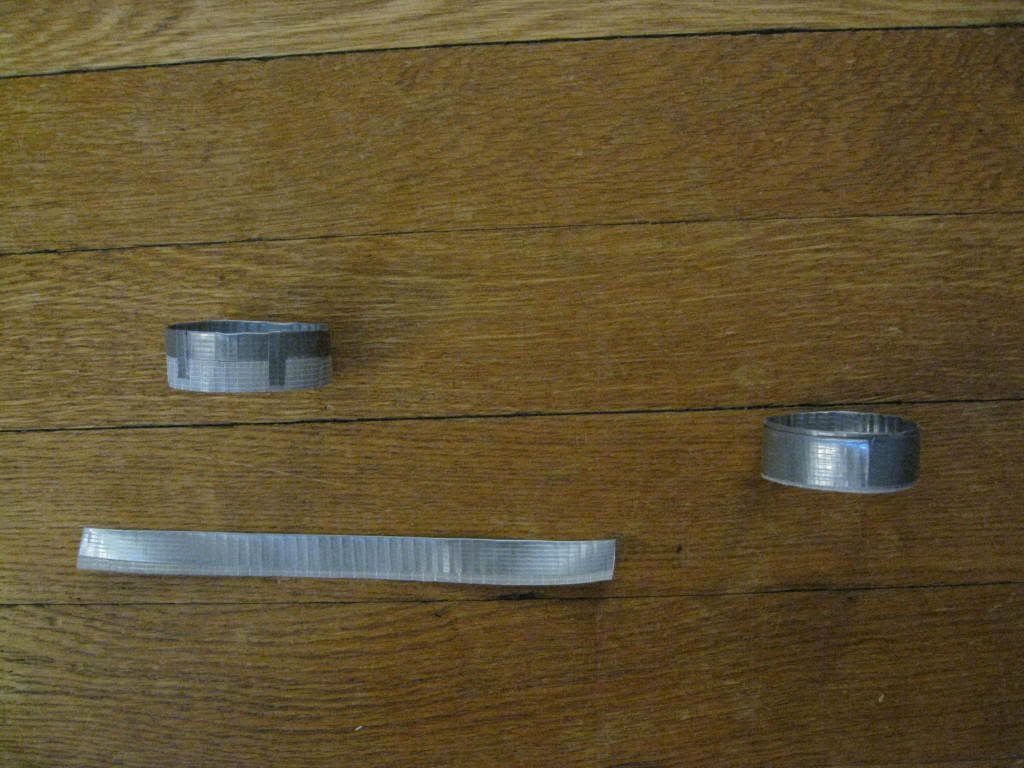The finished cannon:

The cannon consists of a singled, unplugged Big Blast, loaded from the front/muzzle and a turreted, plugged AT2K (seven shots) that are attached to a piece of PVC into which I stick my arm. The triggers are rigged to keyrings inside the PVC, near the internal handle.
And now to do it.
First, I found this nice 2-foot length of PVC that fits my arm well. I don't know the exact ID, but, if you want to build a cannon of your own, it's probably best you fit the PVC to your own arm instead of using my twiglike limbs as a guide.
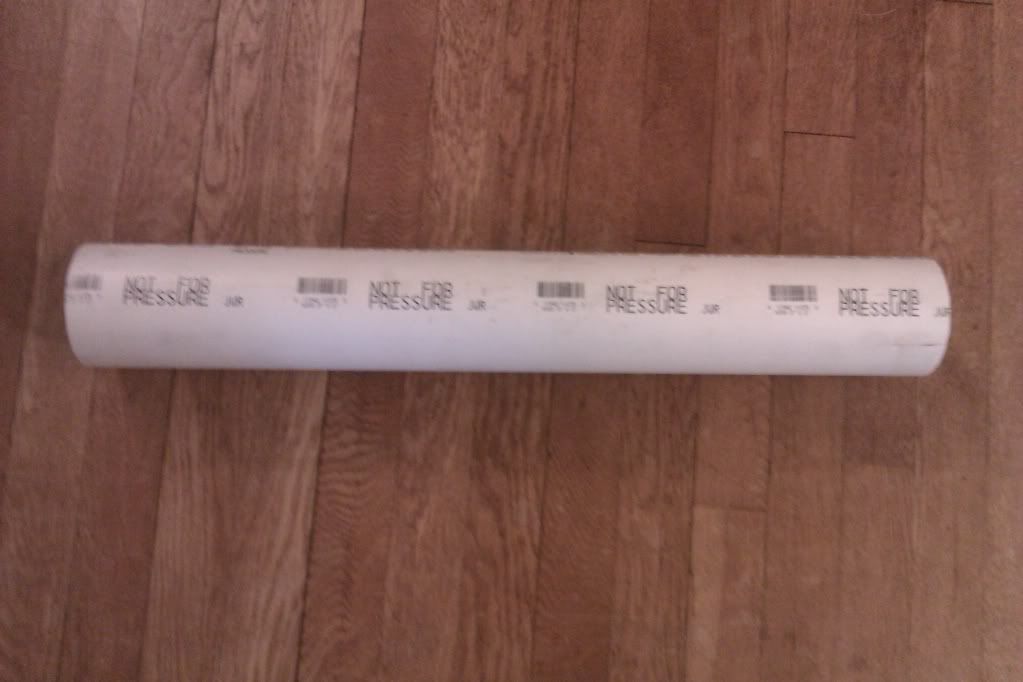
To make it holdable (sp?) get length of inch-thick wooden doweling (Word claims it's a word), cut it to fit inside the PVC, and drill through the PVC and the center of the dowel, then insert a smaller dowel, epoxied it in place, and cut it flush.
Here's mine prior to being cut flush:
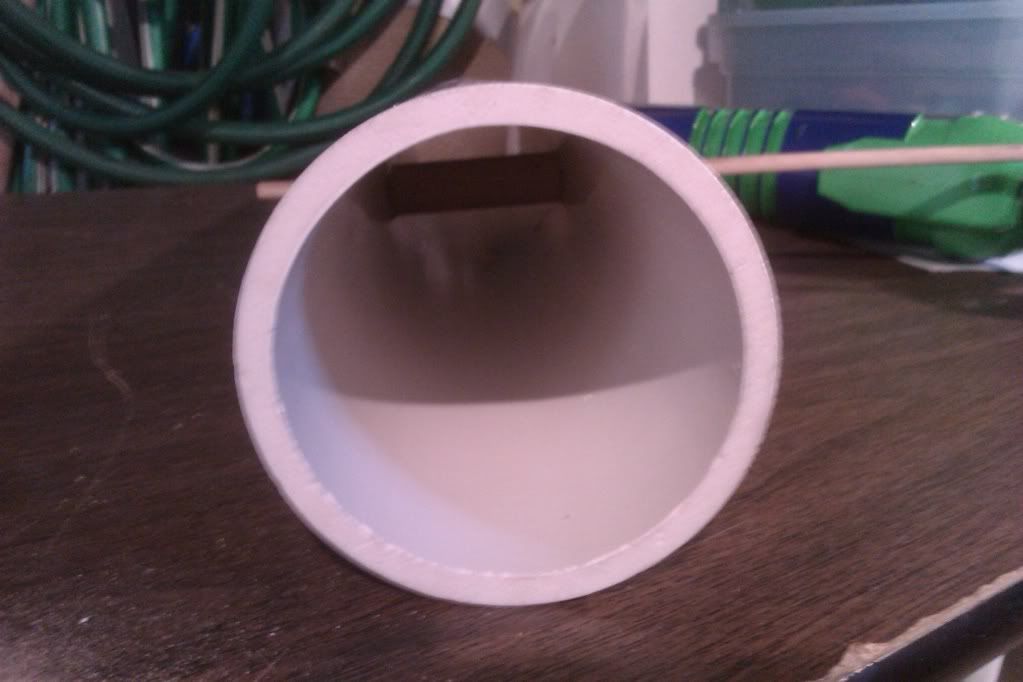
Next, the actual mechanisms. I gutted a Big Blast that had had its trigger broken (this turned out to be a good thing, as you'll see. Cut the black barrel down to a centimeter or so, then epoxy a coupler in place. Make sure that it's on straight.
Coupler'd!
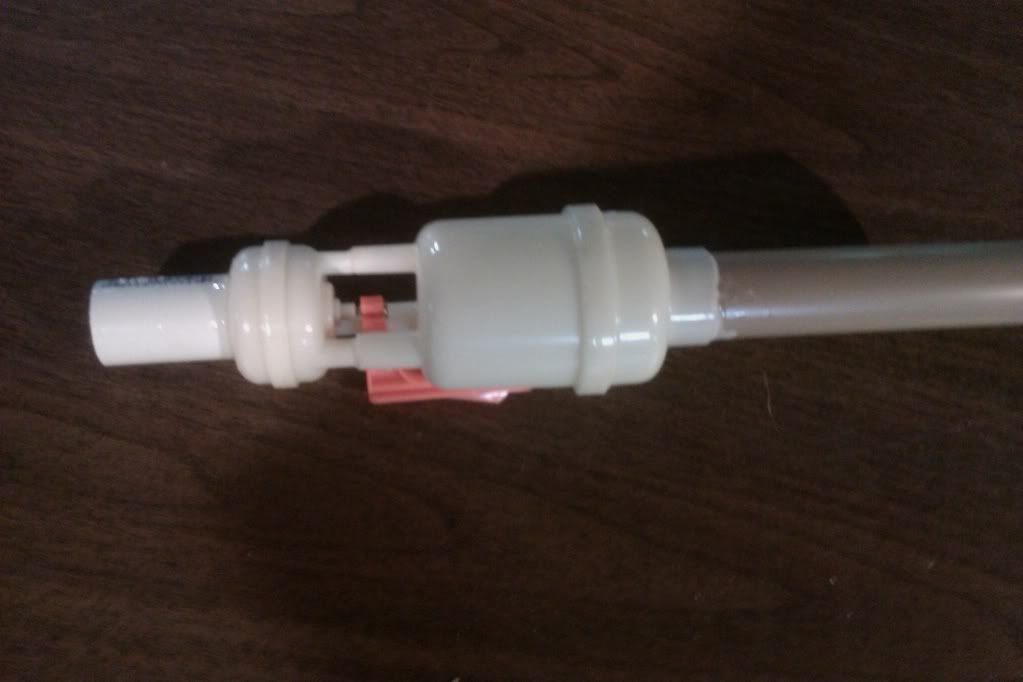
Now cut into the PVC to make it cup the contours of the Big Blast tank. Those of you with Dremels will find this easy; I used a hacksaw. Epoxy the tank in place, again being careful to make it as straight as you can. The more you can recess the tank into the PVC, the narrower and better-looking your cannon will be, and this project is 87% about looks anywhey, so go as deep as you can without the tank getting in the way of you actually getting your arm in there.
I then added a footlong PVC barrel for shooting stock darts, and epoxied the tank down. Place the tank such that the tip of the barrel is flush with the tip of the cannon.
Not too bad for a hacksaw job!

That's it for now on the Big Blast portion. Time for the turret.
Start by making the mounting rings. I found a coupler for the size of PVC that I was using for the body of the cannon; no matter what size your arm, you should be able to find a coupler for it. Cut the coupler from both ends, making two rings that fit around the cannon body. Sand them down so that they rotate smoothly when twisted, but not freely.
Suchly. I, again used a hacksaw.
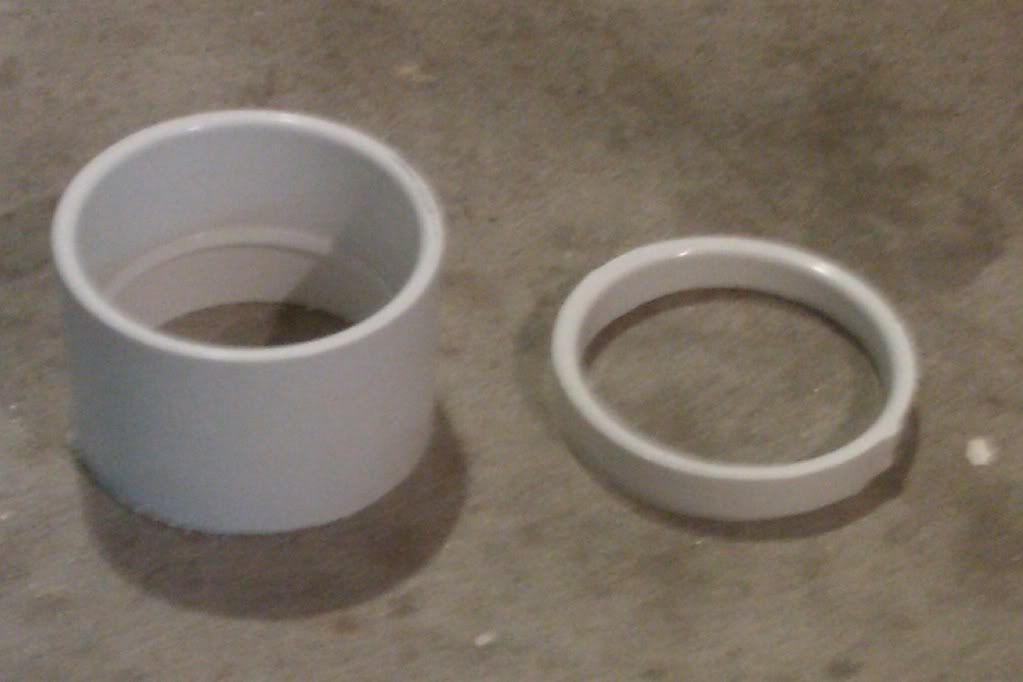
Make two.
Then cut seven (or so) barrels , and epoxy them to the rings. You should be able to do this so that they are extremely straight. I used 8 inches of 1/2 inch PVC, but your tastes may differ. Be VERY sure to match the ends of the barrels at one end of the turret. This is crucial for proper seal and rotation.
Mine looks like this.
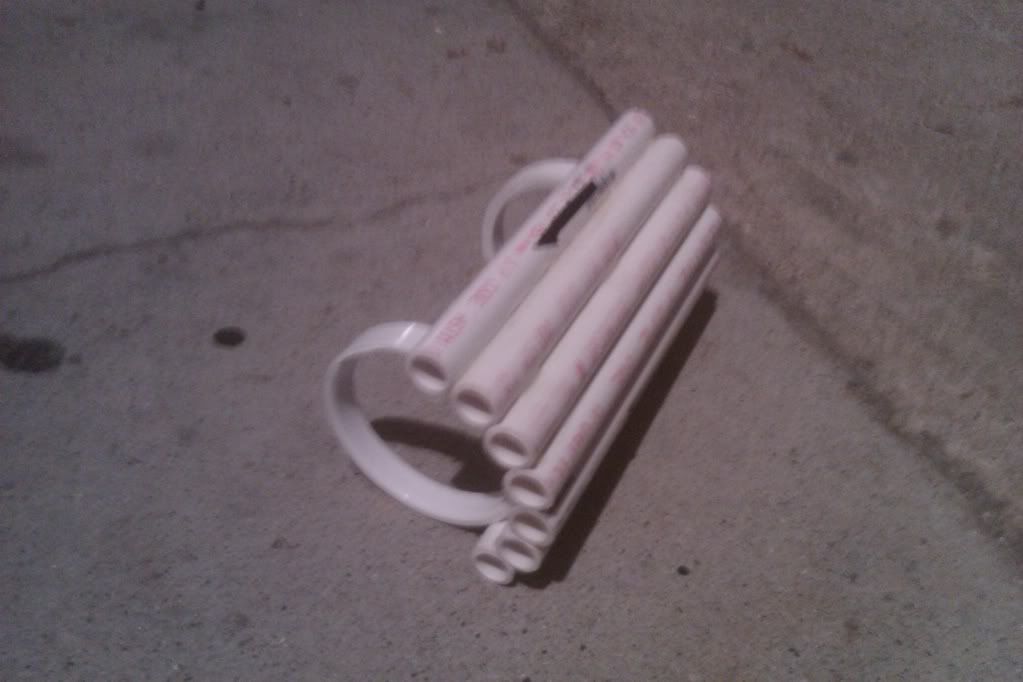
That's it for the turret. Looks nifty! Next comes the AT2K mechanism. Gut a 2K and take the tank and pump. Remove the goo gauge and give the hole an epoxy suppository. Attach some craft foam to the business end of the tank any way you can; I made a wood collar on the nozzle and glued the craft foam in place. This is the all-important seal, so be careful. Maybe this picture will help;

Now make indentations for the 2K tank. Make 'em so that once the turret is aligned with the tank, the barrel tips will be flush with the end of the cannon. The same cautions apply as for the BBBB indents; make them as deep as you can. I still was using the hacksaw, so I couldn't go too deep.
See?

Then glue down the tank and pump, with the pump facing backwards and the end of the tube flush with the aft end of the cannon. The stock tubing was long enough for me.

Now comes the trick part; rigging it. Tie some very strong, not-at-all stretchy string around the trigger of the Big Blast (I drilled a hole in the trigger to facilitate this) and the pin of the 2K. I used a kind of fishing line, but whatever you use must not stretch at all, or pulling the rings will just stretch the string and not pull the triggers. Each trigger line goes back to an eyebolt I bent into shape and epoxied down, then forwards, through eyebolts and into a hole I cut in the cannon near the handle, through the ring, then back out through the same eyebolt, through the other eyebolt, around a post I glued down, and to a common anchoring eyebolt. Sound complicated? Here.
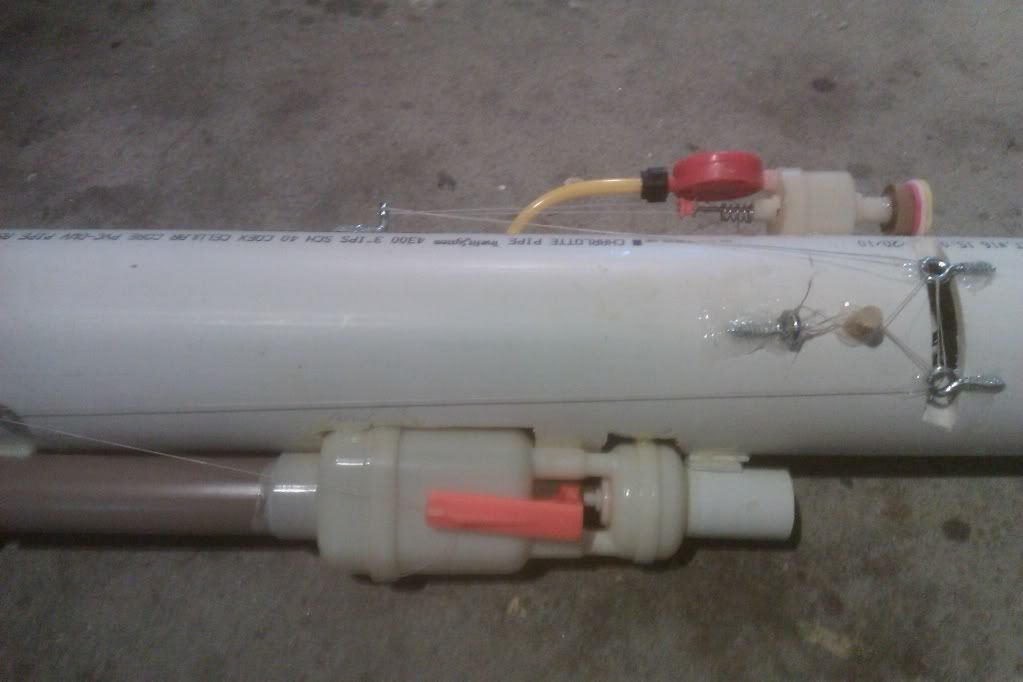
This system actually gives the rings a mechanical advantage that offsets the increased friction that running the string through so many eyebolts introduces.
Now add protrusions so that the cannon will accommodate a metal sleeve. I used wood, but this requires a lot of experimentation.
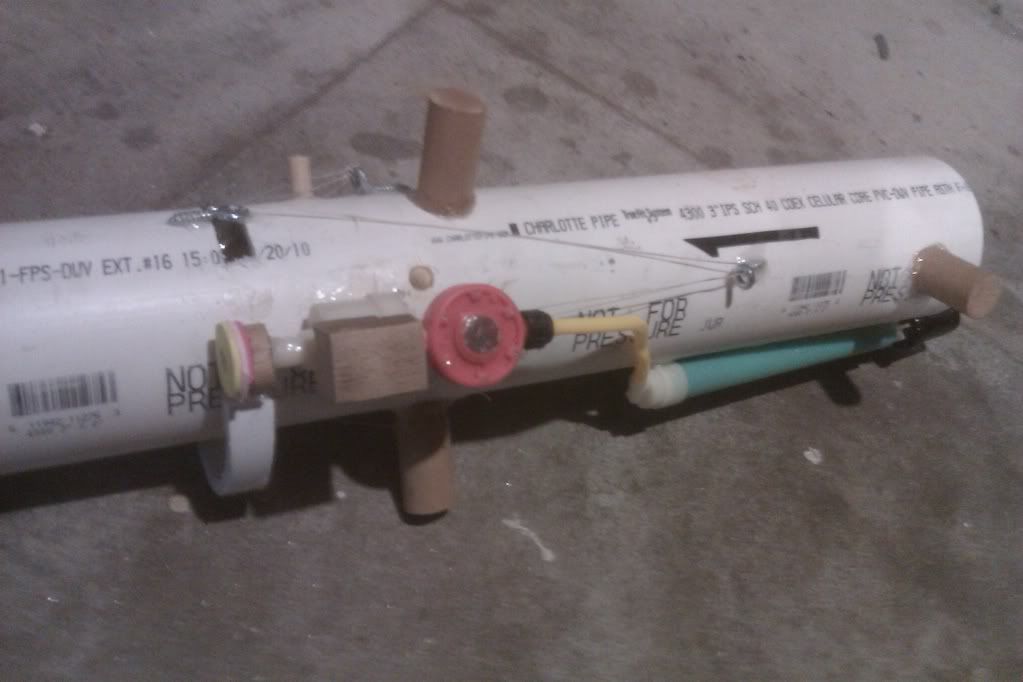
Now on to cladding the thing. Cut a length of 6-inch-diameter aluminum ducting to an 8 inch length
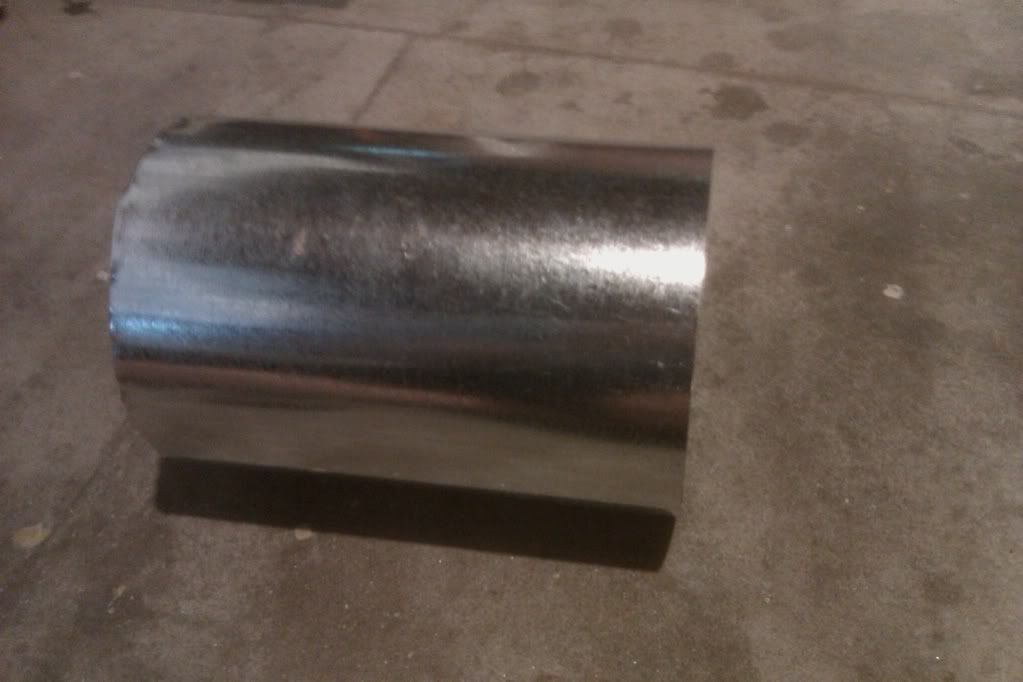
and glue the turret into it.
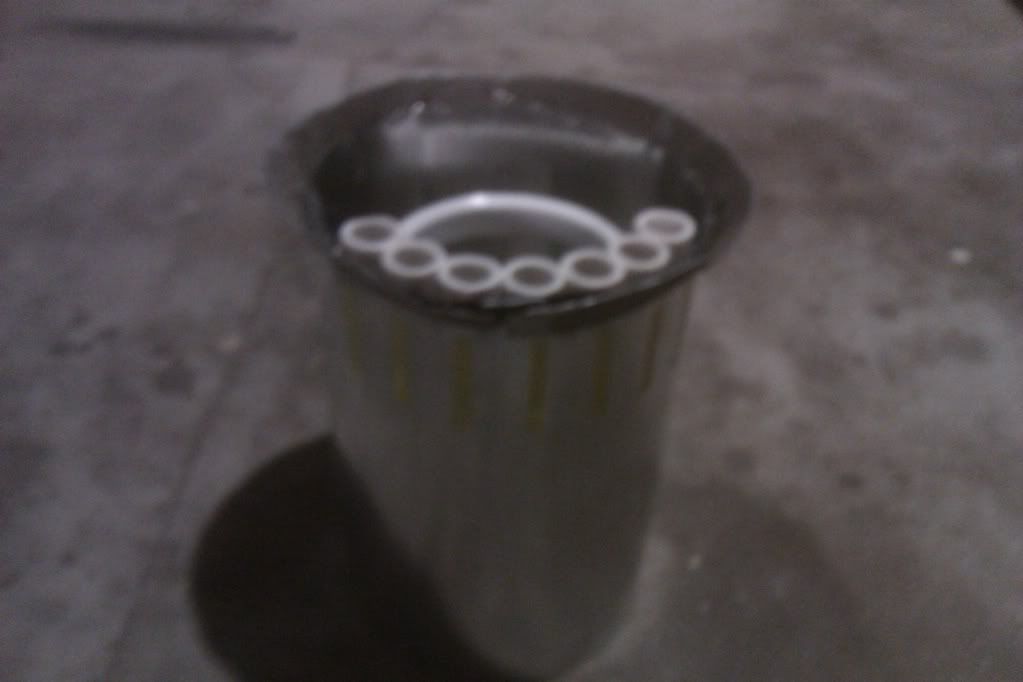
I used an aluminum reducer to make the attractive taper. Duct tape would work too.
Then take some 7-inch-diameter aluminum ducting and put it over the protrusions of the main cannon. Then slide on the turret and you're done!
Except for the ornamentation. I used aluminum e-tape to make the stripes, which were indispensable given that I was trying to ape Samus's cannon as closely as possible. I added tick marks of my own and an arrow to help me align the barrels with the 2K output.
Results: using stock taggers, the Big Blast hits 80' quite easily, and the turreted 2K is getting 50-60 or so. I am working on making it rearloading, but the BBBB will stay muzzle-loading. The cannon is very comfy to wear, but holding it out in front of me for long periods can be tiring. Being able to fire two shots of such power in quick succession is useful, and the reload time is not atrocious, though it is pretty bad. Using NiteFinder internals instead of 2K internals would probably have been a better idea. Accuracy is good; since the thing goes on my arm, it's pretty intuitive to aim.
So that's that. Questions? Comments?
Don't tell me that it's impractical; I knew it would be, and you gotta sacrifice some utility for it to resemble Samus's more.



 Find content
Find content



